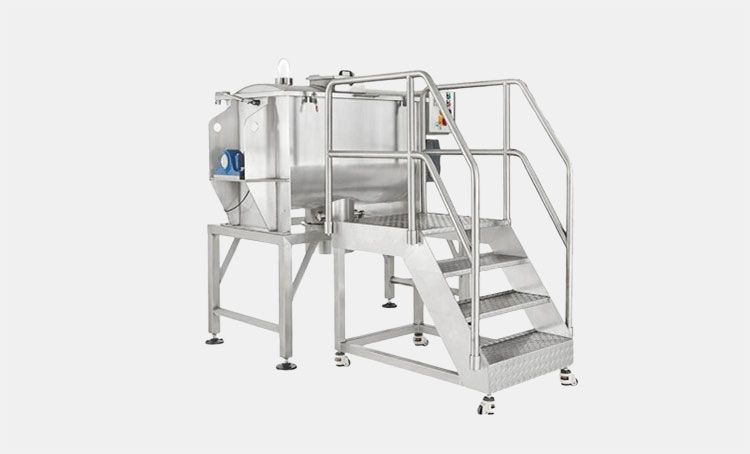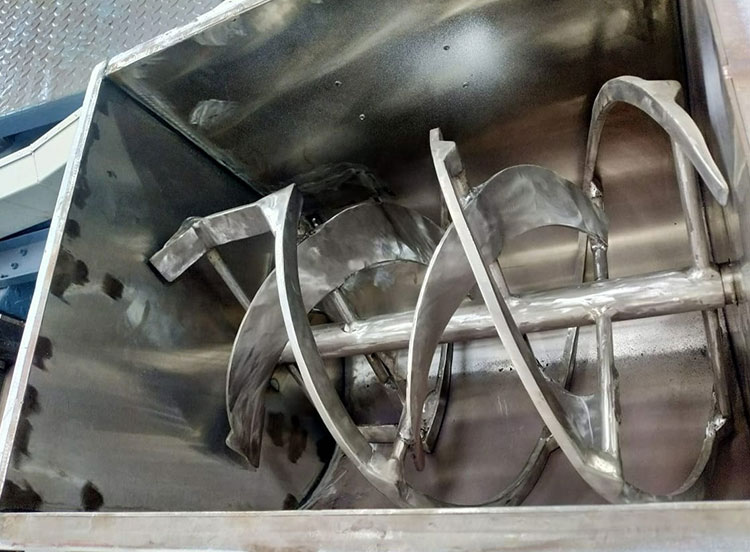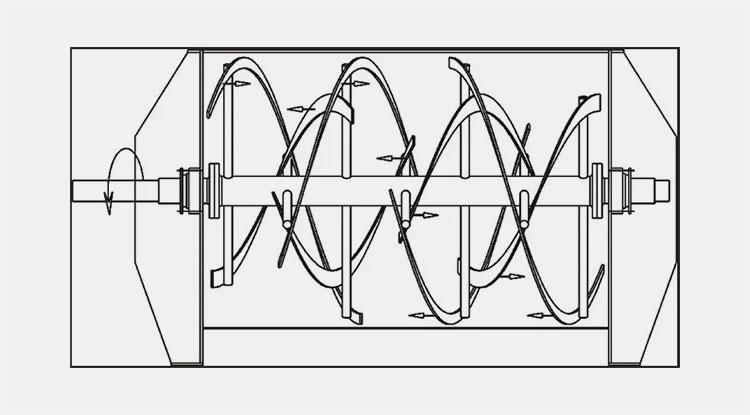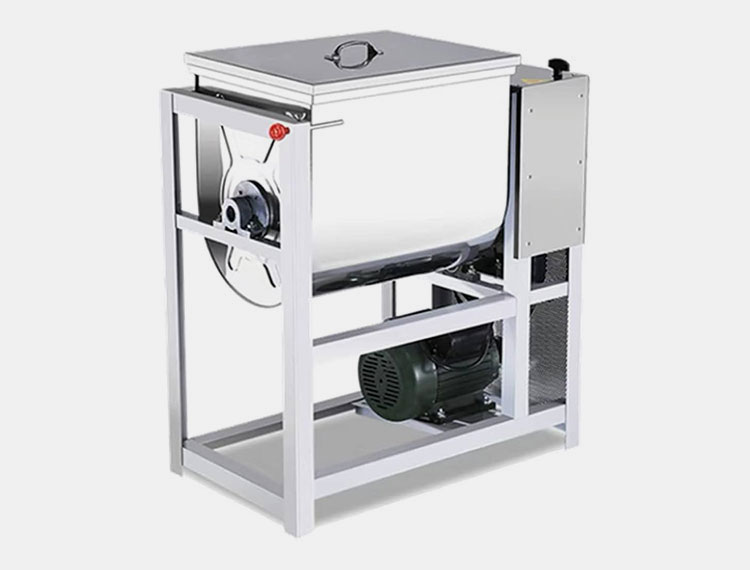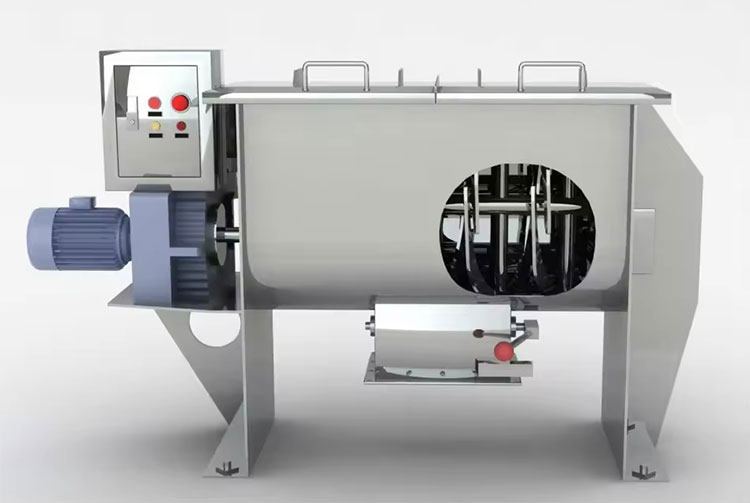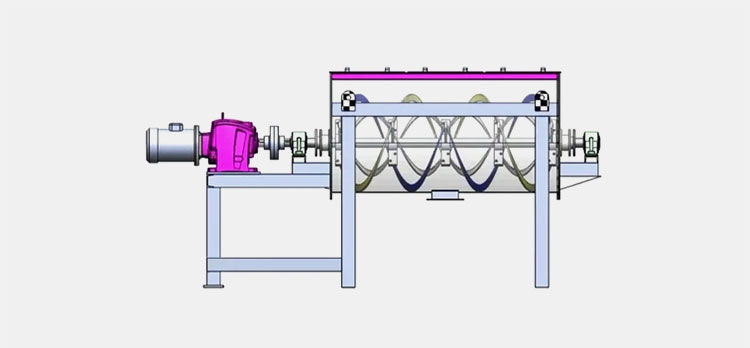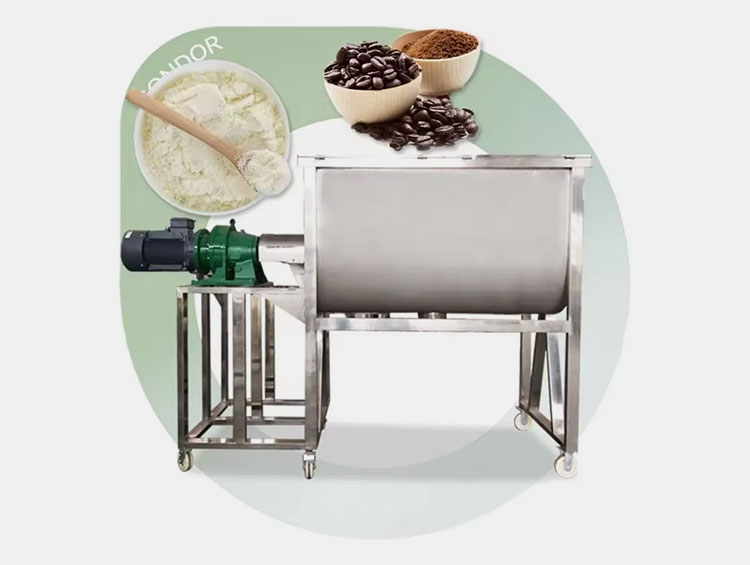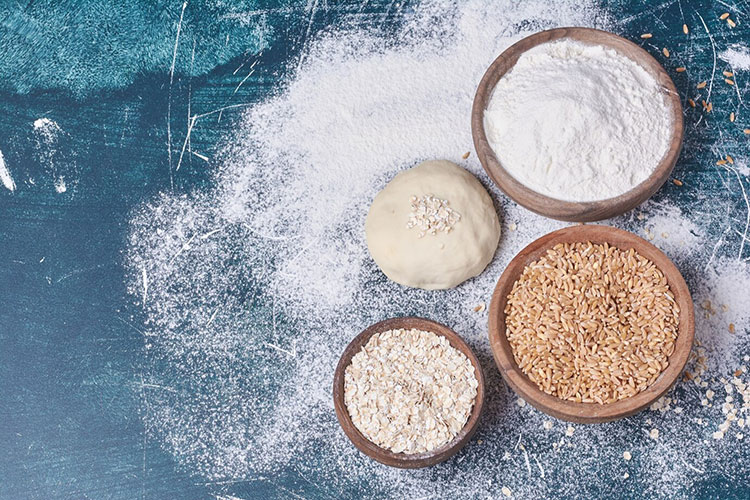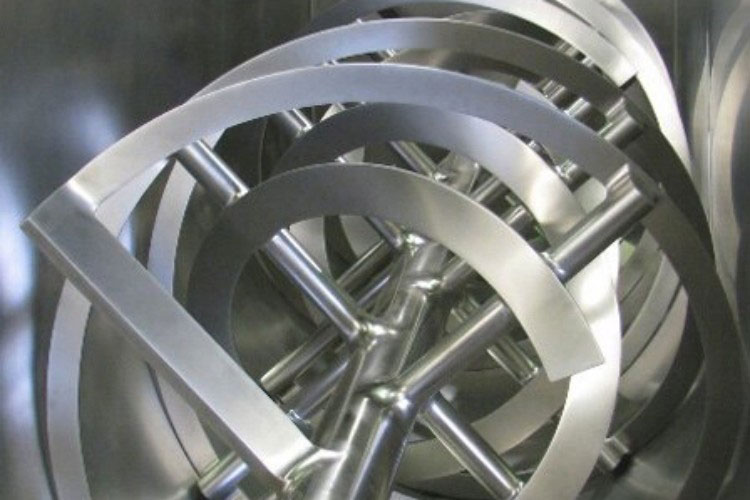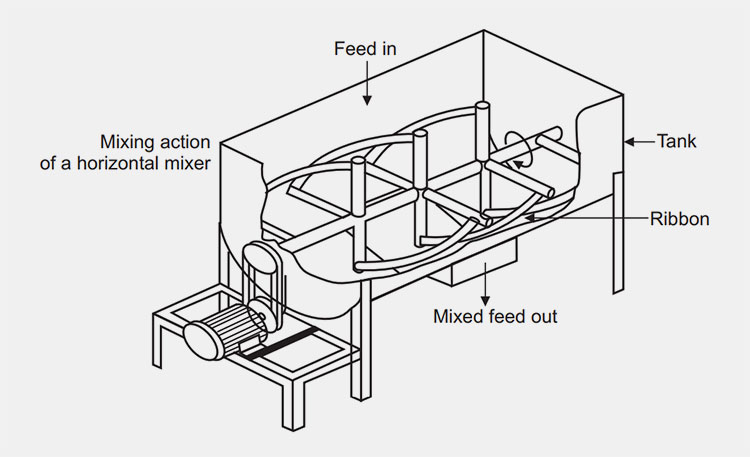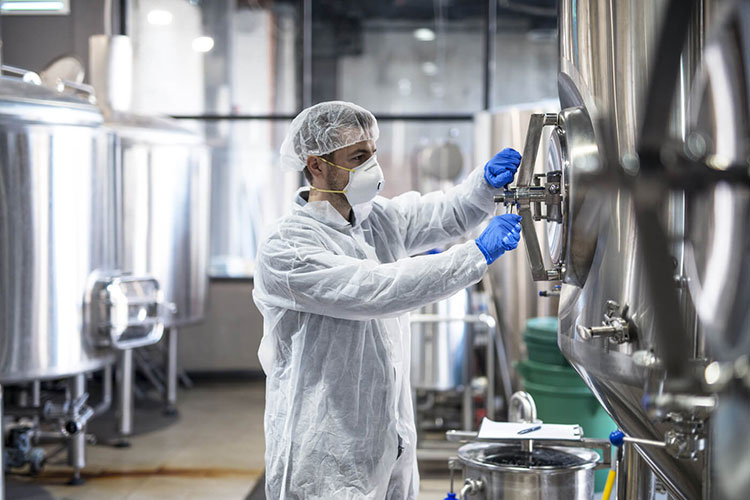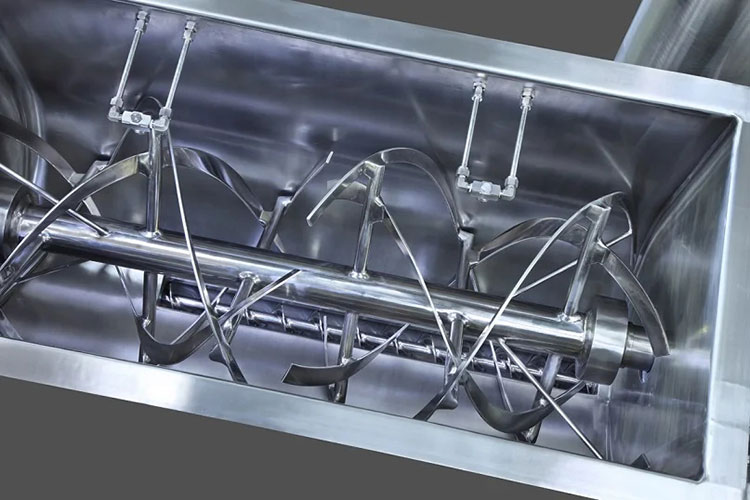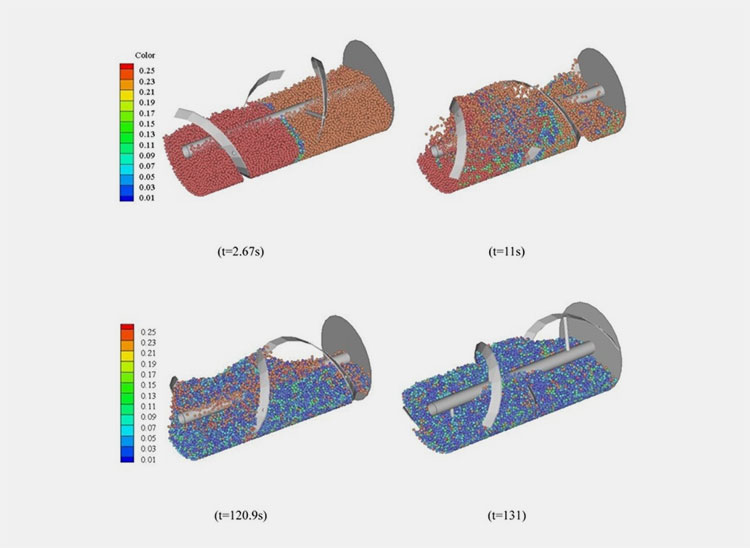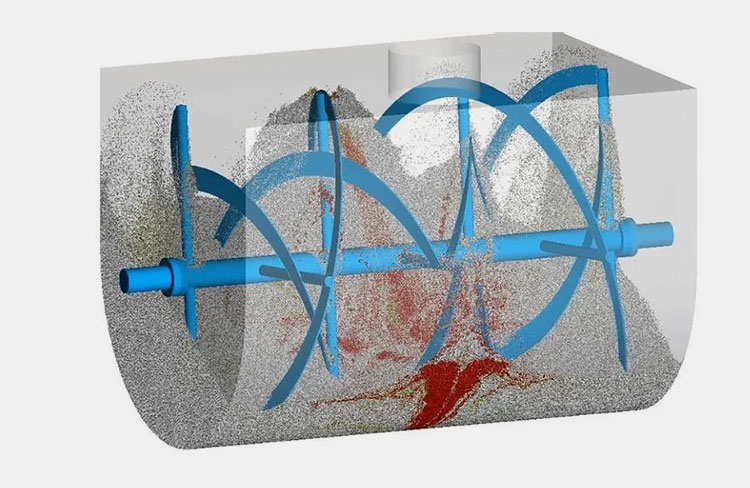What Are the Advantages and Disadvantages Of Ribbon Blender?
Do you know blending is not just a science but also an art?
Blending is an essential process in the manufacturing industry that offers consistency in the quality, texture, and form of the product. How is this achievable?
There are several blenders introduced in the market with the sole purpose of accomplishing uniformity and homogeneity in particle mixture. Among these blenders, the ribbon blender is the most prevalently employed machine across industries, as it blends almost any product with high precision.
This article intends to offer an in-depth discussion about the advantages and disadvantages of ribbon blenders, accommodating those surveying these machines and looking for insights into trustworthy businesses.
1.Definition of Ribbon Blender
Ribbon Blender- Picture Courtesy: SED Pharma
Ribbon blender is a type of trough blender, in which blending happens due to rotational motion of the agitator impeller. It is a large powerful mixing tool that perfectly blends dried powders, solids, and semi-liquids. Its name is derived from the thin metal impeller present in the shape of a ribbon.
It has a U-shaped trough either vertical or horizontal and a solid agitator that is affixed with spokes called ribbon. There are one, two, or, three ribbon blades present in the ribbon blender, assisting in smooth and homogenous mixing. These ribbons are present at the central axis and the sides on the trough, allowing more intensive and high-performance mixing. Ribbons transfer materials inside and outside in opposing directions, causing them to blend.
2.Advantages of Ribbon Blender
A ribbon blender is an indispensable tool in industries, carrying out the challenging task of blending with high speed and extreme accuracy. It generally performs the function of premixing and produces coatings for different products. Some of the highly known advantages of ribbon blender are penned below:
Quick Response
Quick Response
The ribbon blender is renowned in the industry because of its quick blending time. It is powered by a gear motor drive and is engineered to rotate at a high velocity of up to 300 feet per minute. Blending time for a filled blender is about 15 minutes and even faster if the ribbon blender is filled at less capacity. For example, this time is approximately 7 minutes when materials are stocked only to the shaft or if the mixer is filled at 50% capacity.
Better Mixing Effect
Better Mixing Effect- Picture Courtesy: Okonomi Kitchen
The ribbon blender has an ideal mixing design in which the shape of the mixing vessel and the arrangement of helical ribbons boost the mixing performance of the blender. The materials are moved and distributed continuously, creating a homogenous mixing pattern.
These helical screws convey and rotate solid or semi-solids in two different directions at the same time, providing better mixing action. The inner part of the ribbon shifts materials toward the edge of the mixing trough, whereas, the outer component of the helical ribbons moves the mixture towards the center of the trough. This creates a homogenous mixing effect.
Multi-Functionality
Multi-Functionality- Picture Courtesy: The Westline School
Versatility is one aspect that increases the traction of any equipment and ribbon blender is not different in this aspect. It is suitable for mixing solid, semi-solid, powdery, granular, and even wet materials like pastes. This versatility leads to the adoption of the ribbon blender in several industries from food to pharmaceutical, chemical to construction. It can process materials with wide-ranging densities, particle sizes, and water content.
In addition to mixing, it also performs functions of coating and vacuum drying. With the help of spray nozzles, liquid additives are added, while the strong action of agitators ensures uniform coating distribution of particles.
Some types of ribbon blenders are also offered with thermal jackets and vacuum capabilities, making them suitable for drying purposes. Thermal jackets provide precise control of temperature, while vacuum evaporates moisture from the mixture.
Smaller Headspace
Smaller Headspace
Space is an issue in smaller factories and production. Thus, a ribbon blender is a preferred instrument with rooms having low ceilings and headroom-limited areas. The structural construction of the ribbon blender needs less headroom.
It is because it is usually available in horizontal configuration, and occupies smaller headspace. This is contrary to vertical blenders, which are more difficult to fit in height-constraint settings.
Cost-Effectivity
Cost-Effectivity- Picture Courtesy: Tasting Tables
Cost-effectivity is a balance between spending and profit. When the cost-effectiveness of the ribbon blender is studied, it is determined that this machine is inexpensive due to its short and high-quality mixing. It produces more yield in every batch and generates a uniform-quality mixture.
This decreases the possibility of mixing flaws and saves money invested in raw materials and labor wages. It effectively handles mass batches swiftly and decreases the number of mixing cycles, thereby, saving operational expenses linked with machine setup, inspection, and maintenance.
Due to a combination of decreased running expenses, high output, and decreased maintenance outlay, the businesses speedily recover their upfront expense, which makes the ribbon blender a lucrative option for continuous production.
Long-lasting Device
Long-lasting Device
Ribbon blender is manufactured with superior-quality and durable materials such as stainless-steel alloys, which are integral in decreasing abrasion and boosting rust tolerance, robustness, and long operational life. Stainless steel is often selected for constructing ribbon blenders because of its robust strength, and tolerance to rusting and chemical degradation. Therefore, the machine can easily manage demanding operativity for several years.
Also, the ribbon blender is fabricated with maximum precision, thus its parts like motors, gearbox, and impellers manage heavy-duty processing. It ensures reliable operation and lowers the prospect of machine breakdown and frequent repair.
Simple Operation
Simple Operation
The ribbon blender is customized with a straightforward and simple-to-learn display screen and button panels. These panels have programmable mixing options, for example, number of cycles, time duration, and, speed control. Thus, it is easy to start and start the device with minimal training.
This simplicity in operation also decreases the necessity of long-term supervision and allows manufacturers to achieve mixing goals.
Safety
Safety- Picture Courtesy: Get Inspired Everyday!
Safety is fully taken into account during the fabrication of the ribbon blender. It is equipped with built-in safety features such as emergency stop buttons, safety guards, and, an interlocking mechanism. The emergency stop system instantly pauses the device if there is emergency state. This allows for decreased accidents.
Safety guards enclose the mobile components like agitators and discharge vents to prevent the workforce from handling the risky parts during machine operation. Also, ribbon blenders are offered with motor overload protection, which mechanically turns off the device if it identifies an overworking of the motor. This averts overheating risks and probable motor damage and also minimizes fire incidents.
Scalability
Scalability
With the growth of the business, it becomes essential to increase the production volumes by expanding the mixing capabilities of the ribbon blender. There are different size ranges of ribbon blenders in the market, catering to diverse processing needs. Some ribbon blenders can process 12500 liters in the working volume.
Moreover, the ribbon blender can manage both small and large batches, which makes it easier to scale up and down. There are some variants of ribbon blenders with modular design, which makes it easier to add parts like extra mixing vessels, bigger motors, and ribbons to improve mixing needs.
Therefore, manufacturers invest in modular ribbon blenders, which allows them to instantly scale up the machine without buying completely new equipment.
No Risk of Cross Contamination
No Risk of Cross Contamination- Picture Courtesy: Oh, The Things We'll Make!
Cross contamination poses severe risks in industries-particularly pharmaceutical and food- where product purity is given utmost importance. Cross-contamination happens when residual products from earlier batches are not fully removed from machine.
Therefore, ribbon blender simple structure allows instant cleaning and lesser risk for deposits from the preceding batch mix with the new.
Prevention of Leakage
Prevention of Leakage
This operational feature is crucial in safeguarding product integrity and preventing product wastage. Therefore, ribbon blender is typically customized with high-quality seals, for instance, O-rings, gaskets, and bearings. These seals aid in maintaining tight enclosure, consequently, preventing leakage of raw materials and products. They can resist high pressure and rigorous mixing.
Moreover, the ribbon blender has leak-proof construction that comprises welded joints and seams. Hence, there are no gaps and weaknesses by which product loss can occur. Besides this, the ribbon blender consists of leak-proof discharge valves that have robust sealing characteristics. This also has a pivotal role in leakage prevention.
Gentle Mixing
Gentle Mixing
It is one of the major benefits of the ribbon blender. It delicately handles and mixes fragile materials without causing their degradation. It has a low-shear blending ability that gently conveys and folds the materials without compromising their structural integrity. In the ribbon blender, mixtures are not aggressively agitated, consequently preventing the production of high-shear forces and thereby allowing uniform yet gentle blending.
No Dead Spots
No Dead Spots- Picture Courtesy: Soln Pharma
In old blenders, you may find the presence of dead spots that impedes the mixing efficiency. Dead spots are the regions such as near the edges and walls, where the load remains stationary and is not fully blended with the remaining batch.
There’s a flexible option for clearance between ribbon screws and walls of the mixing trough leads to the stress-free blending protocol and good quality outcomes.
Ideal for Broad Range Materials
Broad range materials
Viscous raw feed, for example, dense pastes, gels, or slurries, do not have good fluidity when compared with powders and granules, which makes it more taxing to blend these materials successfully.
Therefore, ribbon blender is a suitable unit for free-flowing materials and resilient materials that move and blend heavy and viscous materials. The ribbon agitators are ideal to facilitate the movement that bringing about an even and homogenous blending.
Low Noise
Low Noise- Picture Courtesy: Solutions worker
It is a significant property of the ribbon blender particularly in the manufacturing sector, where the installing a low noise machine is important for the safety and well-being of the workforce. Different elements in the ribbon blender, like mechanical vibration, motor running, and mixing of material in the blender and other parts altogether produces low noises, so you can enjoy relaxing work time.
No Segregation Possibility
No Segregation Possibility- Picture Courtesy: Forbes
The ribbon blender promises to attain a homogenous mixing of very fine and denser particles, consequently, offers micro-blending where there’s no chances of particle separation during and after the process.
Sanitary Processing
Sanitary Processing- Picture Courtesy: ROSS
Hygienic processing is key to acquiring high-quality products. Hence, the ribbon blender has smooth and non-porous architecture, fabricated from stainless steel that can withstand biological contaminants, for instance, bacteria, and physical contaminants like dust. This leads to improved cleanability and sterility.
This machine comes with a polished interior, thereby, minimizing the chances of product buildup, and increasing convenience in cleaning.
Disadvantages
Every story has two sides and it is quite applicable to ribbon blender. Similarly, with the advantages of ribbon blender, there are often some disadvantages of this machine as well. Let’s consider the disadvantages of ribbon blender:
Greater Blending Time
Greater Blending Time- Picture Courtesy: Science Direct
Ribbon blender has extreme mixing efficiency, but it sometimes due to improper handling may results in higher blending time requirement. This is well-known that if you fill the machine’s tank, it wont produce efficient mixing properties. Therefore, it takes greater time to give you the result.
Also, heavy-duty motors- particularly when processing denser and heavier loads- consume a significant amount of time and energy.
Blockage or Jamming of Agitators
Jamming
Although the ribbon blender has low shear, in some situations the blending action and the motion of helical ribbons near the walls of the mixing container can be compressed and deteriorate the materials and ultimately blocking of the machine. With time, equipment blocking or jamming of agitators results in poor mixing performance and costly part substitution.
Leakage of Materials
Leakage- Picture Courtesy: NICETY Machine
It is challenging to unload the material to avoid the outflow of blended substances. The tight access doors and a single discharge valve are secured during work, but it requires careful handling. Also, you should take care of broken seals to replace them immediately which can leads to cause spillage.
Conclusion
In short, the ribbon blender provides a wide array of advantages to the industrial sectors, ranging from quick response to cost-effectivity, and homogenous mixing to long-lasting service. However, the prospective manufacturer should carefully weigh the pros against the cons, such as problems of segregation and blending of viscous materials. Thus, businesses can make safe choices during planning to add ribbon blender devices, ensuring ideal mixing effectiveness and fulfilling desired production requirements. Still curious about the features of the ribbon blender, then you are welcome to contact us, Allpack through our helpline or messaging service.
Don't forget to share this post!
CONTACT US
Tell us your raw material and project budget to get quotations within 24 hours.
WhatsApp Us: +86 181 7101 8586
The Buyer's Guide
